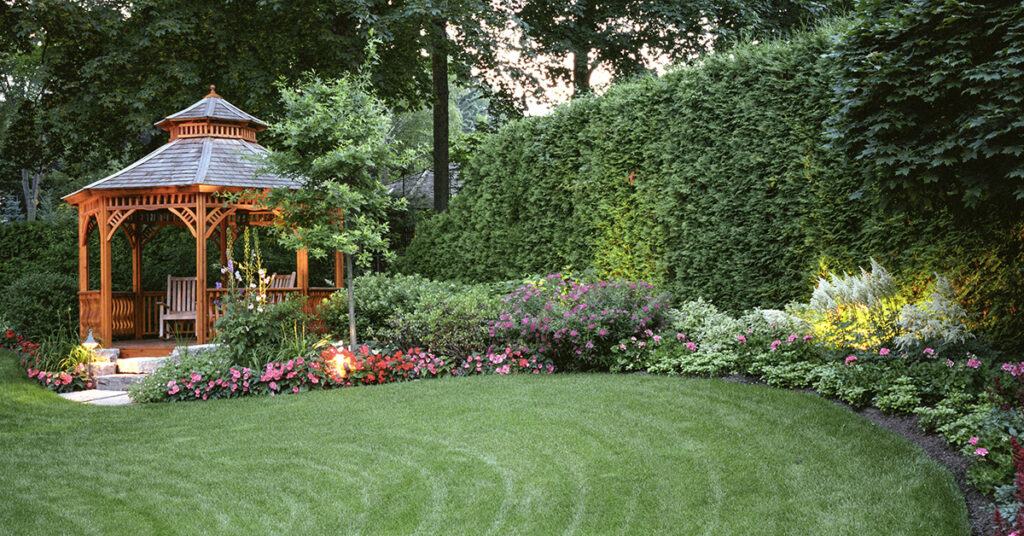A healthy lawn doesn’t happen by accident.
It takes work to create a lush, green landscape.
In this blog post, we’ll look at eight things you can do to ensure a healthy lawn this spring.
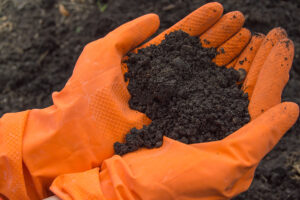 Soil First
Soil First
A healthy lawn needs healthy soil, and healthy soil needs to have the right nutrients. Conducting a soil test can tell you whether the nutrients your soil needs are present. This test also helps us recommend a fertilizer program specific to your lawn as well as ways to address nutrient deficiencies. Your local Hunterdon, NJ garden center can offer you more information on conducting a soil test.
Once you’ve made these applications, our program provides your lawn with the nutrients it needs to grow and thrive. A healthy lawn is not only pleasing to look at; it is better prepared to combat potential insect populations and conditions which promote fungus and disease.
T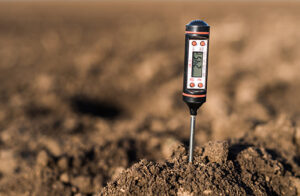 he Time to Lime
he Time to Lime
The most potentially limiting factor in nutrient availability to your turf is soil pH, which is a value based on the acidity or alkalinity of your soil. Soil that has a pH of 6.2 to 6.8 — either neutral or slightly acidic – offers the most nutrients to your turf. A soil test can provide the current pH along with a recommendation for the lime necessary to properly adjust the pH of the soil. Lime can be applied at any time of year.
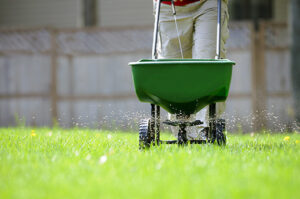 Spring Fertilizer
Spring Fertilizer
Your turf greets the spring with all the nutrients it needs stored in its roots from the previous fall (assuming you applied adequate nitrogen).
These reserves help the turf to get off to a good start. As the turf grows it will deplete these reserves and start to rely on carbohydrates being produced. A light application of nitrogen will help the turf to continue to produce green top growth which is where these nutrients are made.
We recommend adding extra nitrogen by around May 1st. Applying too much will only weaken the turf by promoting excessive top growth. An application of ½ to ¾ lb. nitrogen for every 1,000 square feet is generally all you need.
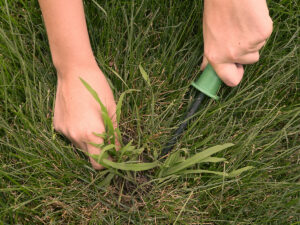 Spring crabgrass control
Spring crabgrass control
Crabgrass seed begins to germinate once the average soil temperature reaches around 60 degrees. In this part of New Jersey, you’ll need to apply pre-emergent crab grass control around the time forsythias begin to bloom.
These control products usually stay effective for three to four months, although a second application may be necessary six to eight weeks after the first in areas where crabgrass is a consistent nuisance.
Pay attention to seeding requirements and the fertilizer needs of the turf. Pre-emergent control products should not be applied within three to four months of when you plan to over-seed, depending on use rates. Control product labels provide instructions for reseeding, but a Hunterdon, NJ garden center should also be able to advise you on proper usage for this product.
 Broadleaf weed control
Broadleaf weed control
You can apply broadleaf weed control anytime weeds are growing, and air temperatures are below 85 degrees. These products are sold as stand-alone, or in combination with fertilizer. Turf fertilizer requirements should be considered when applying these products.
Spring broadleaf weed control is effective, but fall is the optimal time to apply these products. This is when the growth habits of most weeds complement the action of the weed control product and help to translocate the product down into the root system.
You can scale back these applications as time goes by, focusing on spot treatments or alternating every year. Talk to your local Hunterdon, NJ garden center to determine the best weed control practice for your lawn.
 Disease control
Disease control
While fungus and disease generally need long periods of moisture to develop, conditions can vary, which is why we recommend a broad-spectrum fungicide for preventive and curative control. You’ll need to repeat applications as long as conditions persist.
In general, maintaining a healthy turf thru proper cultural practices is the best defense against fungus. These practices include but are not limited to, proper mowing, soil aeration and effective fertilization including a periodic soil test.
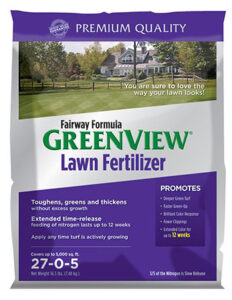 Summer Fertilizer
Summer Fertilizer
Summer fertilizer should typically only be applied when the turf is actively growing and then only if there is adequate soil moisture to support growth. We will usually only recommend summer fertilizer on lawns with supplemental irrigation. Summer applications should not exceed .5 lbs. nitrogen per 1000 square feet. This nitrogen source should be a slow release formulation.
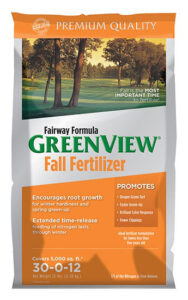 Fall Fertilizer
Fall Fertilizer
Don’t think of fall as a vacation from lawn work. Now is the time to build a quality lawn. Lateral growth and root development are the priorities for your turf. And two-thirds of the nitrogen you apply to your lawn each year should be applied in the fall. (As we said earlier, this helps build up the nutrients your turf needs for winter.)
We recommend applying nitrogen at least twice at six to eight-week intervals, maybe once around Labor Day and a second application between Halloween and Thanksgiving.
Like we said at the beginning, a good lawn takes work, but it’s not a project you need to tackle on your own. If you have questions about these or any other lawn care issues, visit Mendham Garden Center.
Each of our three locations – Mendham, Chester and Annandale – has the products and the experts you’ll need to keep your grass green this year.

